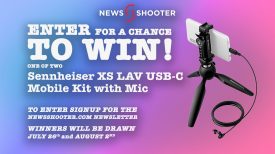
Timecode Systems recently introduced the UltraSync BLUE, it is the company’s first product to feature a new patented timecode sync and control protocol. UltraSync BLUE transmits timecode to a recording device over Bluetooth with claimed sub-frame accuracy. I thought it was a good idea to take a closer look at the UltraSync BLUE.
Timecode sync is not a glamorous subject, but it is important. If you are working in multi-camera environments, making sure that all the cameras and sound equipment are timecode synched is imperative. While it has become easier to sync audio and video through programs like PluralEyes, and even inside NLEs like FCPX, neither option is foolproof. The only way to guarantee frame accurate timecode on all your devices is to use a dedicated timecode sync system. Whether or not you need timecode syncing devices really depends on a lot of factors. If you are working as a solo shooter or doing a simple two camera interview sometimes a simple clap is sufficient for lining up audio later on. If you are recording separate sound and/or you have multiple cameras that are constantly starting and stopping recordings, then a proper timecode syncing system saves a lot of headaches during the post-production process.
So with that in mind, let’s dive in and see how does the Timecode Systems UltraSync BLUE works.
What is UltraSync BLUE?
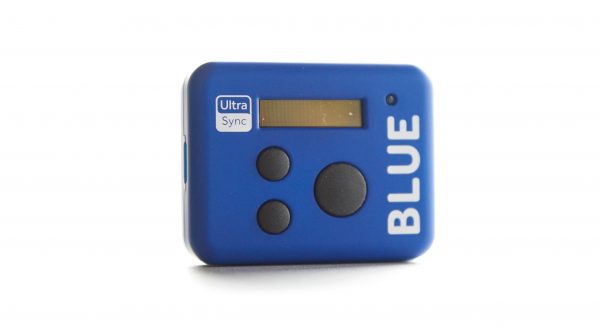
UltraSync BLUE is designed for cameras and audio devices that have Bluetooth capability and have adopted Timecode Systems timing protocol. UltraSync BLUE has the potential to work with any camera and audio device that has built-in Bluetooth, but the caveat is that the device needs to have adopted this timing protocol. This, unfortunately (at least at this moment in time) makes the device quite limiting. Timecode Systems is working with various manufacturers and will be making more compatibility updates over the coming months.
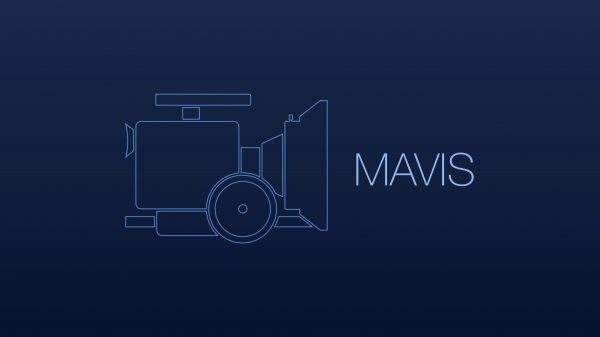
UltraSync BLUE is currently supported by the MAVIS pro camera app for iOS and Apogee MetaRecorder app for iOS. MAVIS is a free professional filmmaking camera app for the iPhone. It offers a range of professional level filming tools (from focus peaking to waveform monitors) that can be purchased in bundles. Once paired with an UltraSync BLUE, the MAVIS timecode bundle is unlocked automatically for free, allowing timecode metadata to be embedded directly into media files generated from video shot on the MAVIS app.
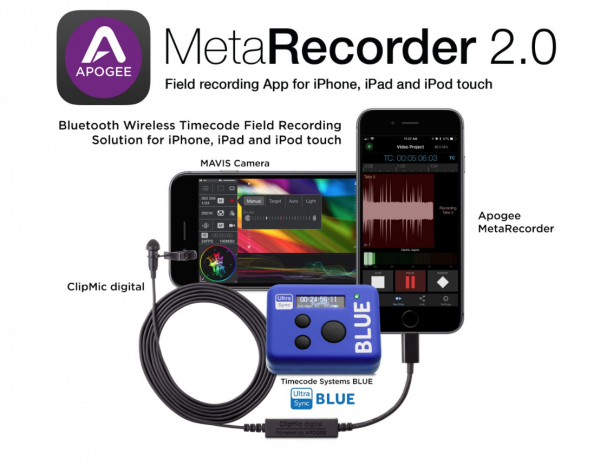
Apogee MetaRecorder is a two-channel audio recording app for the iPhone. It allows recordings from up to four iOS devices to be linked, tagged and organized, and works alongside a wide range of microphones and other hardware, allowing professional quality sound to be recorded on an iPhone. MetaRecorder is free to download, with various in-app options to add features (free if a compatible microphone device is attached).
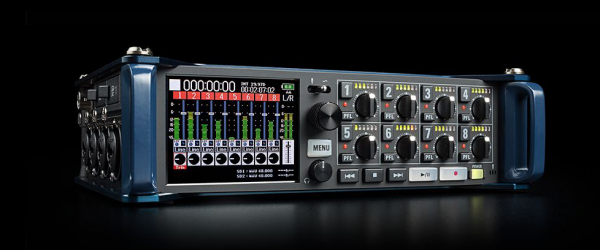
The UltraSync BLUE will also be supported by the Zoom H3-VR Handy Recorder and F8n MultiTrack Field Recorder in the coming months. There is a bunch of cameras now on the market that have Bluetooth so it will be interesting to see if Timecode Systems can get their protocol easily integrated.
Implementation
So how does someone implement Timecode Systems Bluetooth protocol into their devices? Well, the adoption is a fairly easy process. Once a free SDK licence agreement is signed then Timecode Systems can supply a source code SDK library. This allows a third-party to integrate the firmware into any existing camera or audio hardware device that has a Bluetooth LE module. Subsequently, it can also be used for iOS/Android/MacOS/Windows SDK library so developers can integrate it into apps.
Once the code is ‘plugged in’, it will automatically decode the Bluetooth Sync/Control protocol and produce super accurate timecode data to around 2 to 3ms accuracy. Third-party companies don’t really have to do much at all, as the supplied code does all the clever stuff.
So could you, for instance, use a Panasonic GH5 if they implement the Bluetooth Protocol? In theory yes, any device can adopt the protocol. It is especially easy for a camera or audio device that already handles timecode in the media files (such as the GH5S), as all the manufacturer would just need to do is use the supplied SDK to give the timecode data instead of decoding external LTC. It’s quite possible that this new Bluetooth sync protocol will become the ‘standard’ once more manufacturers adopt the protocol.
The UltraSync BLUE can still be used in other ways as well. Such as to work either in a network of UltraSync BLUEs or alongside other Timecode Systems products. Unlike say, the Timecode Systems UltraSync ONE, UltraSync BLUE doesn’t feature more advanced sync options (e.g. there is no genlock or word clock) and has been designed to be a low-cost and simple timecode syncing solution. You shouldn’t confuse low-cost and accuracy, as the Timecode is still transmitted and synchronized across devices with sub-frame precision.
The nice aspect about the UltraSync BLUE is that it uniquely ‘bridges’ the long-range RF and the short-range BLUE together to get the best out of two wireless technologies. With new ‘prosumer’ NLEs coming to market (such as Adobe Rush and LumaFusion) there is going to be further uses for this new Bluetooth protocol.
Bluetooth
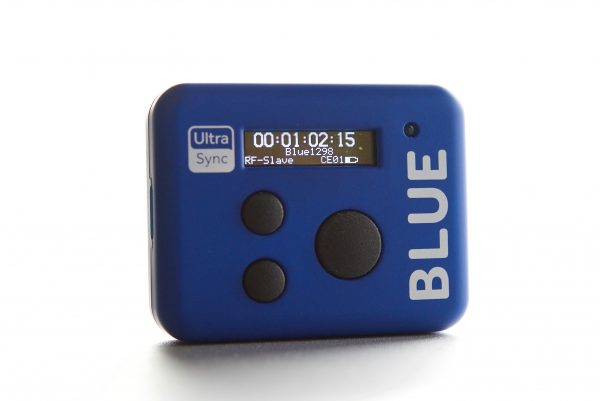
UltraSync BLUE uses Bluetooth pairing to connect to a device. This enables timecode to be transmitted wirelessly from UltraSync BLUE directly into the media file of a connected device. The nice facet of this is that the timecode is embedded directly into a timecode track, so there is no need for any additional conversion software. In essence, the metadata is in the right format to be automatically recognized by professional NLEs. If you are worried that timecode accuracy over Bluetooth won’t be great, you shouldn’t be. Timecode Systems new system has the same level of accuracy over Bluetooth, as their hard-wired solutions.
This is the same technology that is in the Ninja V Atom X Sync
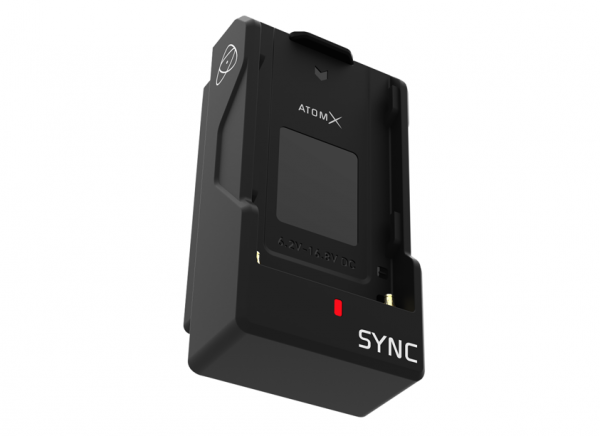
The Atomos Ninja V will have exactly the same Bluetooth LE protocol as the UltraSync Blue and the same long-range RF protocol as the UltraSync Blue and all of Timecode Systems other products such as UltraSync One, pulse, wave, (and older products such as the Denecke TS-TCB slate, mini TRX+, wifi master).
The Ninja V AtomX Sync module can be a master unit or a slave unit for Timecode Systems long-range RF network, meaning it can be part of any workflow large or small. This means that it will work with other AtomX Sync units, pro cameras/pro audio and UltraSync Blue units that are syncing smartphones/mirrorless/DSLR/wearables using BLE.
Actually, the Ninja V (and any other Atomos product that uses the AtomX Sync in the future) will be a powerful combination of an UltraSync Blue and the pulse. This is because the screen of the Ninja V will be able to display all the devices on the RF sync/control network to configure and monitor the status of each, just like the pulse product using the free BLINK Hub apps.
Could this new Bluetooth protocol be used in a different way?
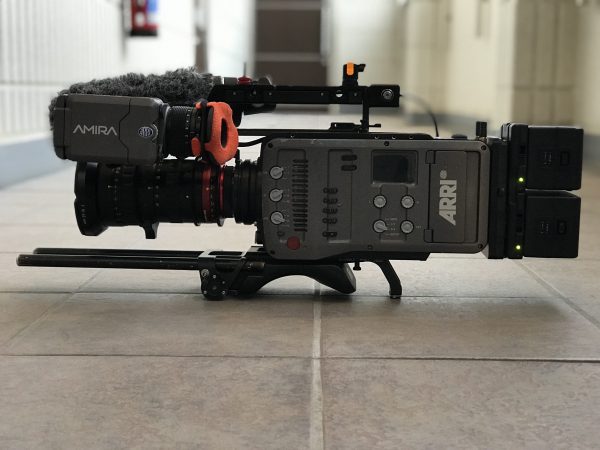
This got me thinking, would it be possible for a device that has Bluetooth to be able to send timecode to other equipment that also has Bluetooth if they use the new protocol? I was just thinking that my ARRI AMIRA has built-in Bluetooth and it can obviously generate its own timecode, so would it be able to send out its timecode? This would mean you could potentially have a system where you didn’t need any external devices at all.
Actually theoretically yes. Timecode Devices haven’t released an SDK to act as a ‘Bluetooth timecode master’ and encode, but it is something they may do in the future if they can get the commercial arrangement working (currently the SDK is free to licence for decode). Of course, if adopted without any external devices you would lose the ability to turn the system into a long-range RF system, but it would open up the market and encourage more manufacturers to adopt the Bluetooth protocol for decode.
How many devices can you connect to the UltraSync BLUE?
A single UltraSync BLUE unit can sync up to four recording devices shooting in close range (up to 10m) over Bluetooth. For devices more than 10m apart, you need to use one UltraSync BLUE for each device and they need to be connected over Timecode Systems long-range RF network.
But can UltraSync BLUE be used as a master unit? Yes, it can be used either as the master timecode generator and transmitter or as a receiving slave unit.
If you want to use Timecode Systems BLINK Hub app in your workflow you will need to use either a :pulse or a :wave as the master unit. If you wish to sync to an external LTC source you will need to use an UltraSync ONE, :pulse or :wave as the master connected to the external source.
The UltraSync BLUE does not have a built-in WiFi connection. A :pulse or :wave master unit is required in your network to connect to BLINK Hub. When in slave mode to a :pulse or :wave, the UltraSync BLUE will appear in the BLINK Hub for status monitoring and control, just like other Timecode Systems’ products.
Build quality
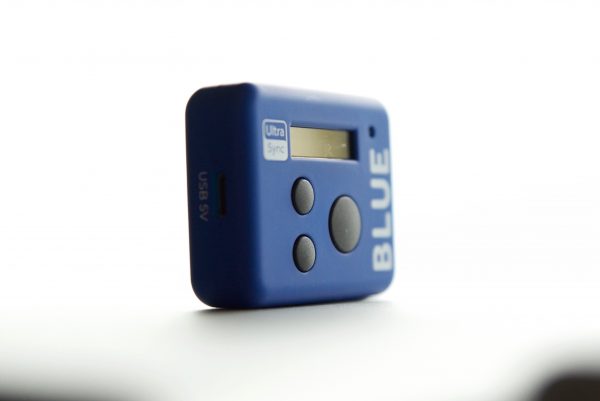
Small timecode sync devices such as the UltraSync BLUE need to not only be robust but also not too heavy or large that they get in your way. The UltraSync BLUE is encased inside a hard rubber shell and there are only three physical buttons on the device.
The UltraSync BLUE has dimensions of 55mm × 44mm × 17mm (width × height × depth) and weighs in at 36g (1.26oz). The 128 x 32-pixel resolution OLED screen is easy to see. Despite its low weight, it feels robust enough for field use. I wouldn’t have any concerns with it breaking if I happened to drop it.
What do you get?
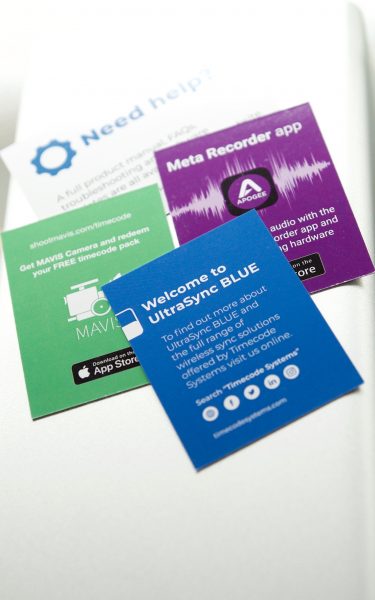
The pack includes a single UltraSync BLUE, a USB charging cable and a few small cards that give you important information about the product and how it works with other devices.
LTC Input/Output
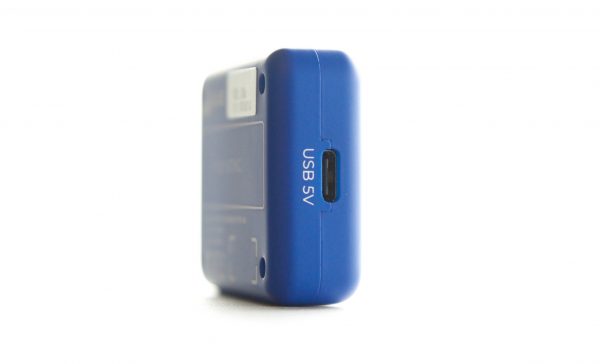
The UltraSync BLUE doesn’t have a DIN 1.0/2.3 connector for timecode input or output, it can only output timecode through Bluetooth. The UltraSync BLUE does not offer genlock or world clock either. The UltraSync BLUE only has a USB input for charging.
Battery
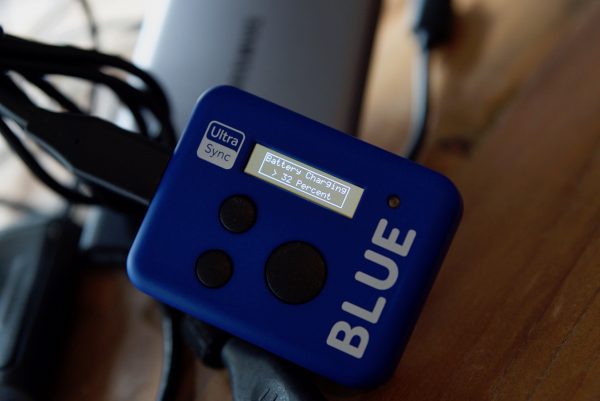
The UltraSync BLUE features a built-in Li-Polymer 3.7V 800mAh 2.96Wh battery. This battery will power the device for around 20 hours. If the UltraSync BLUE’s battery is running out of power, the LED flashes red and the screen shows ‘Battery Power Critical‘. The battery level is also shown on the main screen. To recharge the battery, you have to use the USB-C to USB cable that is supplied with the UltraSync BLUE. Charging the battery takes approximately 3.5 hours. I like that when it is charging, every 10 seconds the level of charge comes up on the OLED screen. The battery cannot be replaced by users. Timecode Systems also warns that the battery life may be reduced if the UltraSync BLUE is used in extreme temperatures.
Mounting
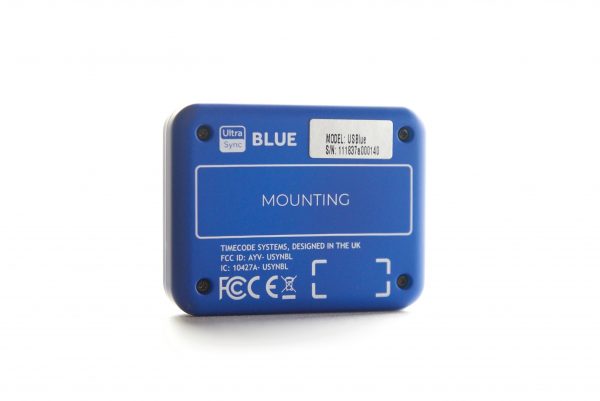
Just like most other timecode syncing devices, the UltraSync BLUE doesn’t have any physical mounting points at all. Instead, it has a place to put velcro on the bottom of the unit. While it is fine to use velcro, there isn’t always a place on some cameras where you can easily put velcro.
I normally just mount timecode sync devices either to the top of my camera using velcro or on the side of a v-lock battery. I have found this works well, but if you are using smaller cameras there really isn’t much space to do this. You may find using a bungee style cable does the trick. The fact that the UltraSync BLUE doesn’t need to be physically connected to any device you could always just choose to keep it in your pocket or place it in a bag nearby. As long as the connection still works it really doesn’t matter where you place or mount it.
Initial Set up
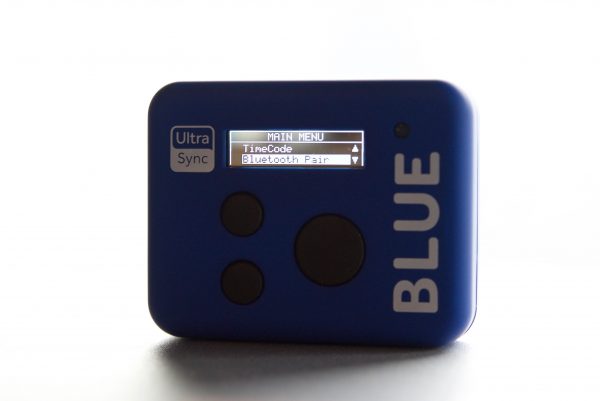
Initial setup of timecode syncing devices is always going to take a bit longer than you expect (especially if you are doing it for the first time) and users should be prepared to read the manual (yes, some people do actually read the manual). I did find that once I went through the initial set up the UltraSync BLUE was fairly easy to use and operate. After the first set-up, UltraSync BLUE automatically remembers and recognizes your device.
The nice thing about the UltraSync BLUE is the display screen. Some small timecode sync devices don’t have a screen (especially at this price point) and having one certainly makes it a lot easier to monitor and make sure everything is correct. I like being able to physically see the timecode and status information at all times. It gives you peace of mind that everything is working correctly. The 128 x 32-pixel resolution OLED screen is the same one found on Timecode Systems UltraSync ONE.
LED Indicators
The UtraSync BLUE uses three different color LED indicators to make you aware of what is happening with your device. This color indication system is pretty basic and easy to understand if it’s green, everything is good, if it’s blue you still need to do something, and if it’s red you have a problem.
UltraSync BLUE is resynchronizing with a master device (LED flashes red twice, very quickly).
TIMECODE SYNCING A DSLR/MIRRORLESS CAMERA OR A CAMERA WITH NO TIMECODE INPUT
Syncing timecode to devices that have timecode In/Out via an SDI is very straightforward, but what about if you want to add timecode to a DSLR/mirrorless camera or any other camera such as a Sony FS7/Canon C100 that doesn’t have a timecode input?
With the UltraSync ONE you can send timecode to one of these cameras through the use of an optional Mini-DIN to 3.5mm cable. To synchronize DSLR cameras using UltraSync ONE, timecode is recorded to one of the camera’s audio tracks. This is known as AUX timecode. So what the UltraSync ONE is effectively doing is putting an audio signal onto the audio track of your DSLR/Mirrorless camera. After you finished shooting this audio signal that contains the timecode you were outputting from the UltraSync ONE needs to be converted to be used before you can see that timecode.
Now, this was a bit of a messy process, and if you are using cameras that don’t have any timecode In/Out you needed to do this extra step in post. With the UltraSync BLUE (once the Bluetooth protocol is implemented in more devices), you will be able to have that timecode embedded as metadata so your NLE will be able to read it straight away without you having to do anything. Small cameras such as the Panasonic GH5, and GH5s, have built-in Bluetooth, so I can see the UltraSync BLUE being a good option if you need to timecode sync multiple small cameras.
So how does it actually work in the real world?
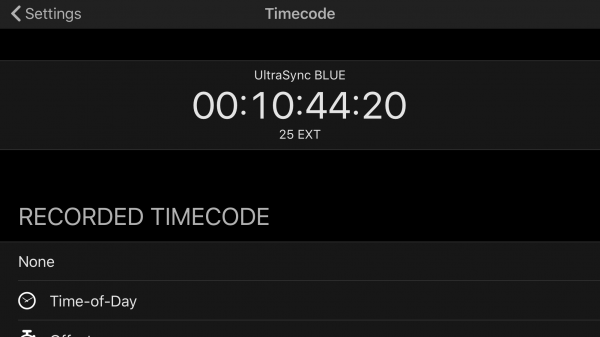
Currently, there are only a couple of devices that support the new Bluetooth protocol that is in the UltraSync BLUE, one of those is the iOS app MAVIS. With support for UltraSync BLUE, MAVIS can be paired so that you can have frame-accurate timecode if you are using an iPhone as one of your cameras in a professional setting. You can also connect multiple copies of MAVIS to a single UltraSync BLUE meaning all your MAVIS videos can be in perfect sync. UltraSync BLUE support is available with a paid Timecode pack (one free Timecode pack per UltraSync BLUE serial). If you have already purchased an UltraSync BLUE you can redeem this pack for free. Alternatively, you can get the Big Bundle which also includes support.
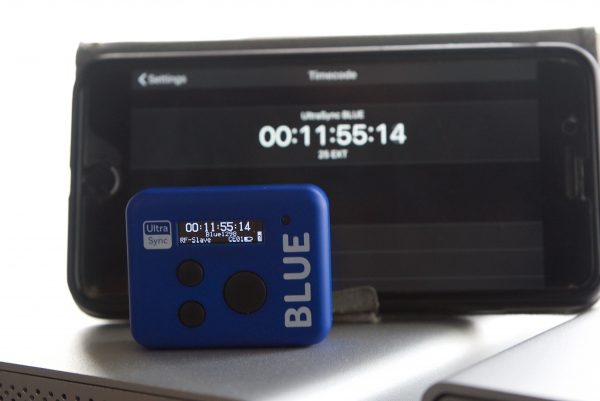
I tried out the UltraSync BLUE with MAVIS to see how easy it was to set up and sync timecode between the two devices. I found it fairly easy to sync up the UltraSync BLUE and the MAVIS app. It only takes a couple of quick steps and you are ready to go.
A single UltraSync BLUE unit can sync up to four recording devices shooting in close range (up to 10m) over Bluetooth, so I decided to see what the range was. I found that the range was pretty good, but it really depends on the environment that you are in. The range is definitely better if your devices have line of sight as if you go to another room or around corners you will lose the sync.
Testing the range is tricky because once both devices are synced, they are synched. Even if you go out of range, as long as the initial timecode was working correctly you won’t notice anything. So what I did was take the iPhone out of range and then I reset the timecode on the UltraSync BLUE. What I found is that as soon as the device comes back into range it automatically picks back up the timecode and you get correct sync again.
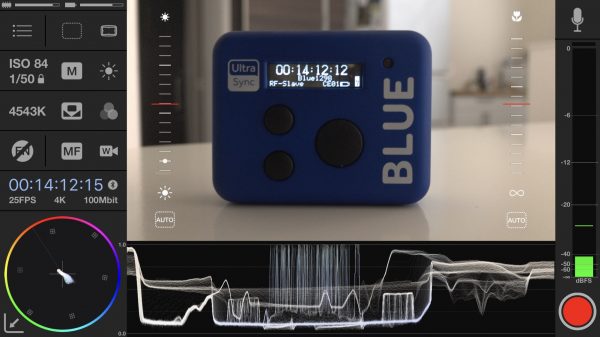
Even if you quit the MAVIS app and then open it back up again, the timecode stays completely in sync and reconnects up to the UltraSync BLUE straight away. The other nice aspect of using UltraSync BLUE with the MAVIS app is that both devices remember each other. Once they were initially paired via Bluetooth I didn’t have to pair them again, even after both devices were turned off and then back on again. This is a nice feature because I hate stuffing around having to pair up devices everytime I use them.
What I liked is that the timecode is embedded in the recording and as soon as you open the file in an NLE you can see it straight away without having to do anything. Now, one word of warning. To see the timecode I had to physically connect my iPhone to my computer and do a file transfer. If I tried to just Air Drop the file straight from the phone, the timecode wasn’t present when I then opened up that file in an NLE.
Now, this is all good and well, but if you wanted to use say an iPhone and the UltraSync BLUE along with another professional camera that doesn’t have Bluetooth you would have to use one of Timecode Systems other products such as an UltraSync ONE.
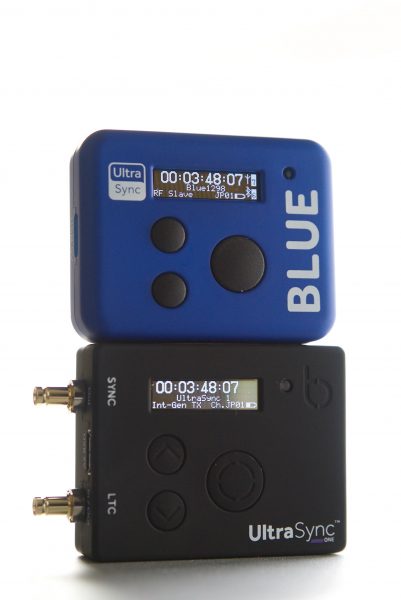
I tested out the UltraSync BLUE in conjunction with an UltraSync ONE and it was very easy and straightforward to get them both to sync up. For this to work, the UltraSync BLUE needs to act as an RF Slave. The UltraSync BLUE can’t act as an Int-Gen TX.
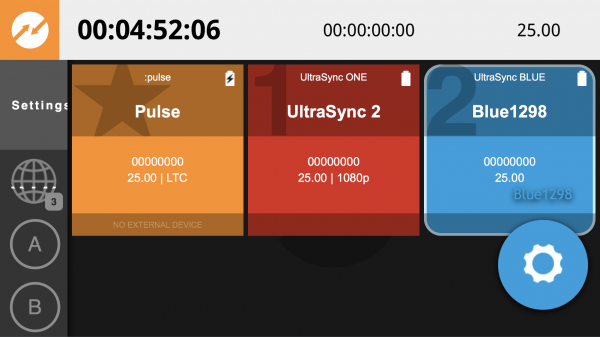
To use the Timecode Systems BLINK Hub app in your workflow you need to use either a :pulse or a :wave as the master unit. The UltraSync BLUE does not have a built-in WiFi connection so I used the :pulse as a master unit. When the UltraSync BLUE is in slave mode the UltraSync BLUE appears in the BLINK Hub for status monitoring and control, just like other Timecode Systems’ products. I found it very easy to have both an UltraSync ONE and an UltraSync BLUE connected to the :pulse so it was easy to monitor all of the devices from my phone.
Apogee MetaRecorder Version 2.0
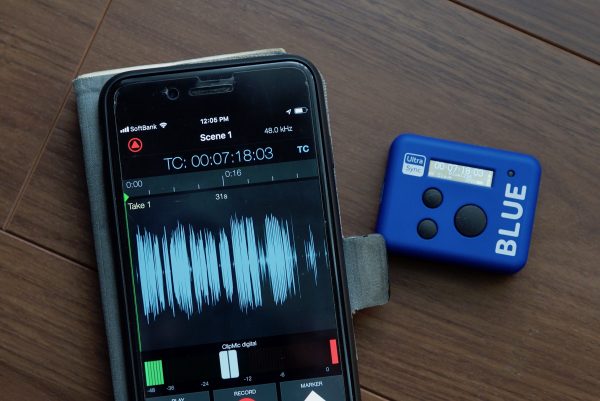
I also tested the UltraSync BLUE with Apogee’s MetaRecorder Version 2.0, the first two-channel audio recording app for iPhone, iPad and iPod touch to offer multi-take recording, tagging and file organization for any field recording scenario. Version 2.0 added support for the UltraSync BLUE with an in-app purchase along with updated compatibility with new Apogee products like Jam+ and MiC+.
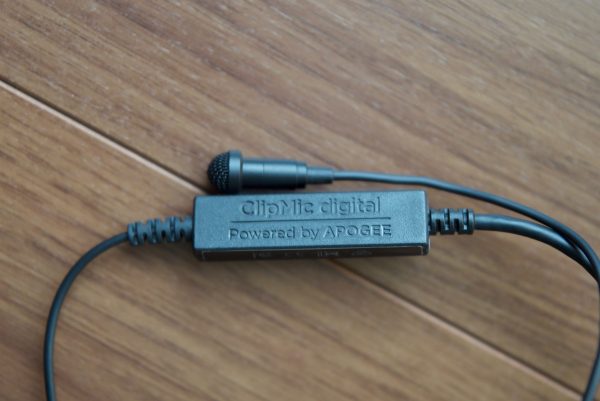
To test out MetaRecorder Version 2.0 I used Apogee’s ClipMic digital lavalier microphones for iPhone and iPad. The microphone features Apogee digital conversion and Sennheiser microphone capsules.
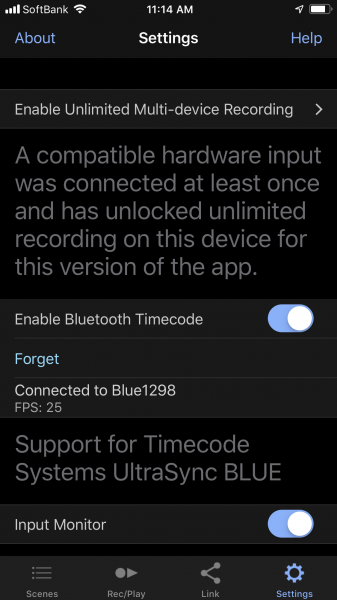
It was super easy to set up timecode sync from the UltraSync BLUE to Apogee’s MetaRecorder. It was just a case of activating a couple of tabs inside the app and then pairing the two devices.
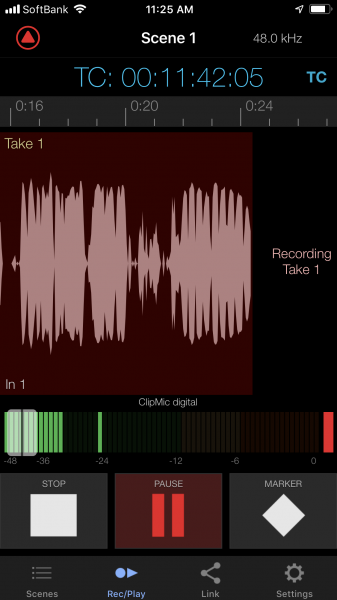
Having matched timecode on an external audio recording on a mobile device is extremely handy. If you use the ClipMic digital with MetaRecorder it gives you another broadcast quality audio source that you can use on your productions. By using a Timecode Sytems UltraSync ONE on my camera and then using an UltraSync BLUE with the MetaRecorder app I was able to have matching timecode for everything I was doing.
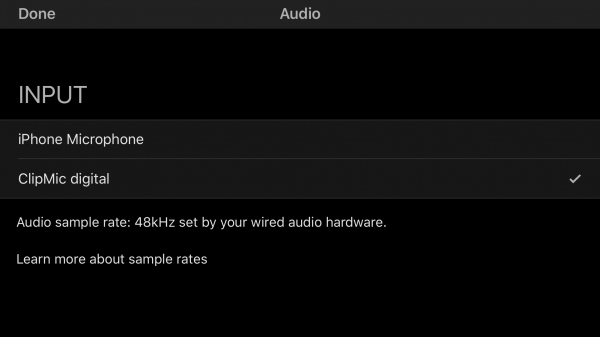
If you happen to be using an iPhone as another camera on a production you can use the MAVIS app along with the Apogee ClipMic digital and have matching timecodes with your main camera. What I also liked was that you can run both Apogee MetaRecorder and MAVIS at the same time, so you can record two versions of the same audio track all timecode matched.
Metarecorder 2.0 is a free download on the app store. The Timecode upgrade for MetaRecorder that adds support for UltraSync Blue is available as an in-app purchase for $2.99 USD. The Apogee ClipMic Digital is $199 USD.
Pricing and availability
The UltraSync BLUE is now available and retails for £125.00 excl. VAT ($160 USD).
Specifications
- Dimensions 55mm × 44mm × 17mm (width × height × depth)
- OLED Display Blue 128 × 32 Pixels
- Timecode generator accuracy TCX0 0.5ppm when free running. In practice, approximately 1 frame drift in 24 hours. Zero ppm when RF locked to a master.
- Supported frame rates: 23.98, 24.00, 25.00, 30.0D (drop frame), 30.00, 29.97D (drop frame), 29.97
- External power USB-C (5V DC)
- Internal power Built-in Li-Polymer (3.7V battery 800mAh 2.96Wh). The battery cannot be replaced by users.
- Charging Time Approximately 3.5 hours.
- Battery Run Time Approximately 20 hours.
- Multi-Channel Digital Transceiver 865.050MHz to 923.200MHz
- Antenna Internal antennas with diversity reception capability.
- RF Range*
- The typical range for synchronization with a master is approximately 200m (656 feet, 219 yards). This range is based on an uninterrupted line of sight. If there are obstacles between a slave and master, the range can be reduced.
- Bluetooth® Range Bluetooth low energy range (BLE) for lower power consumption. Designed for use in the same room as other Bluetooth-enabled devices.
Conclusion
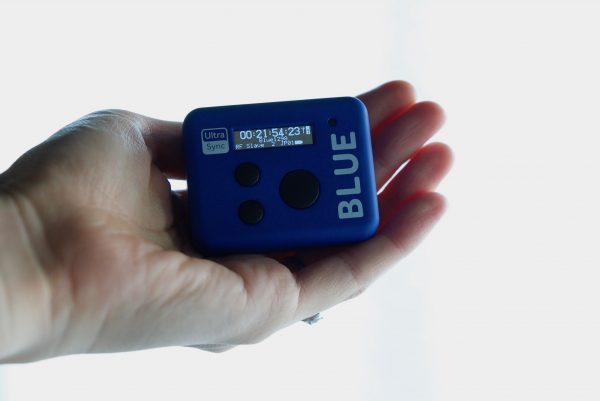
Timecode Systems UltraSync BLUE is a very interesting product, but it’s still very much in its infancy. Its success or failure will depend on how many third-party devices adopt this new Bluetooth protocol. It’s a very clever way of adding timecode synchronization to a wide variety of devices that don’t have their own timecode inputs. Hopefully, in the future, you will be able to sync up all of your devices with relative ease which is a huge deal if you are working in multi-camera environments, regardless of what equipment you may be using. With more and more people now using smartphones to create content, it’s not unreasonable to envisage a scenario where there are 5-6 people all running around filming on their iPhones, with all the material being timecode synched.
For working professionals using cameras that do have timecode in/out connections, the ability to be able to sync up timecode with smaller DSLR or mirrorless cameras easily and efficiently is a big deal. Subsequently, the ability to sync up timecode with audio recording devices is also something that shouldn’t be overlooked.
It will be very interesting to see just how quickly other manufacturers adopt this new Bluetooth protocol. The concept is rather brilliant, and hopefully, soon all of your devices (well at least the ones that have Bluetooth) will all be capable of receiving the same timecode regardless of whether they are a camera, mobile device or audio recording solution.



